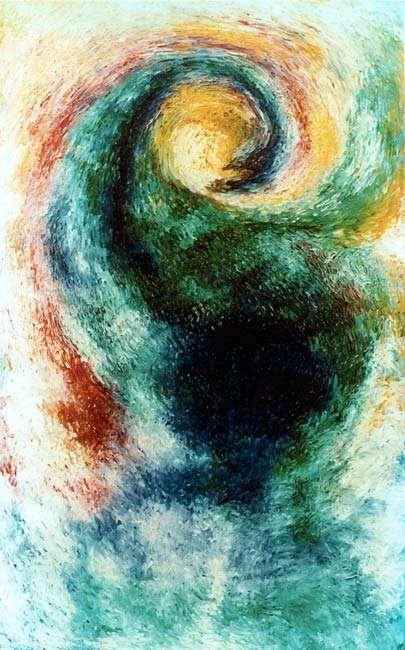Francisco Brennand
Matter is Spirit
"The most marvelous things are always the unmentioned ones."
Hermann Melville
The light in the paintings by Plínio Palhano is as vital as the photosynthesis to the growth of plants, hence its distance from any academic conception of simple lighting of the scenery.
That invisible light pre-exists on the canvas, embedded in its core, like a closed lamp. The brush like a fire dart, the paint matter like wounds of shadow. From this conflict the energy of his paintings is reborn in the shattered figures that, burnt by the sun, appear and fade. Even though Plínio Palhano is a painter, he is akin to Vicente Huidobro, Chilean poet who like him "does not copy realities, makes them." Huidobro has stated that the poet does not imitate nature, he imitates its way of acting: "he turns out poetry as the rain and the earth make trees." Once Palhano told me it was in "The Disemboweled Ox" by Rembrandt that he had found out the "matter of painting", its laws and underground light. From the same Rembrandt whose art André Lhote reminded to be enough as an everlasting rule to judge all the painting. That same exposed and infectious passion which also led Gustave Moreau to insist that all pictorial matter should compete in quality and shine with the precious substances. When nature needs that raw material, it is beyond any definition. Eliade refers to the old text in which Zachariah wrote that there is no mistake in declaring spiritual "all the matter", as well as we do not lie if we claim its corporality, if we call it heavenly, "its real name", but we would also be right if we called it terrestrial.
As to my ties to Palhano, I have gathered these signs of his outright concerns. First, I took notice of his ablaze and dead hinterland landscapes. Afterwards, it was slowly that I looked at a whole series of female nudes outraged by solar brushstrokes which sometimes do not coincide with the human anatomy. Thereafter, I saw paintings of bloody animal carcasses touched by a strange transfiguring light of that sun which, in the intensity of its flames, absorbs all of the stain, stupidity and cruelty of men. At a later time, we talked about his obstinate passion for Rembrandt. Last of all, we run into extraordinary Idols, seemingly bodiless, which appear and vanish entertained in the middle of the flames. All these figures were turned out in twenty-seven panels in the same size and the painter by avoiding to individualize them, left them nameless, preferring an indivisible baptism for the whole set: Rose of Fire? Flower of the Abyss? Flowers of Fire? "We agreed that these issues should be transmitted mystically as poetry which uses fables and parables. If we believe in what some people say, there exists an oath of silence not to publicize the secret in books." Roch Gray hinted that Van Gogh died in the devouring flames of the Sun and I would add: in its Unutterable Silence.
Property Santos Cosme e Damião, February 20, 1985 (Ash Wednesday).
Back to FLOWERS OF FIRE




